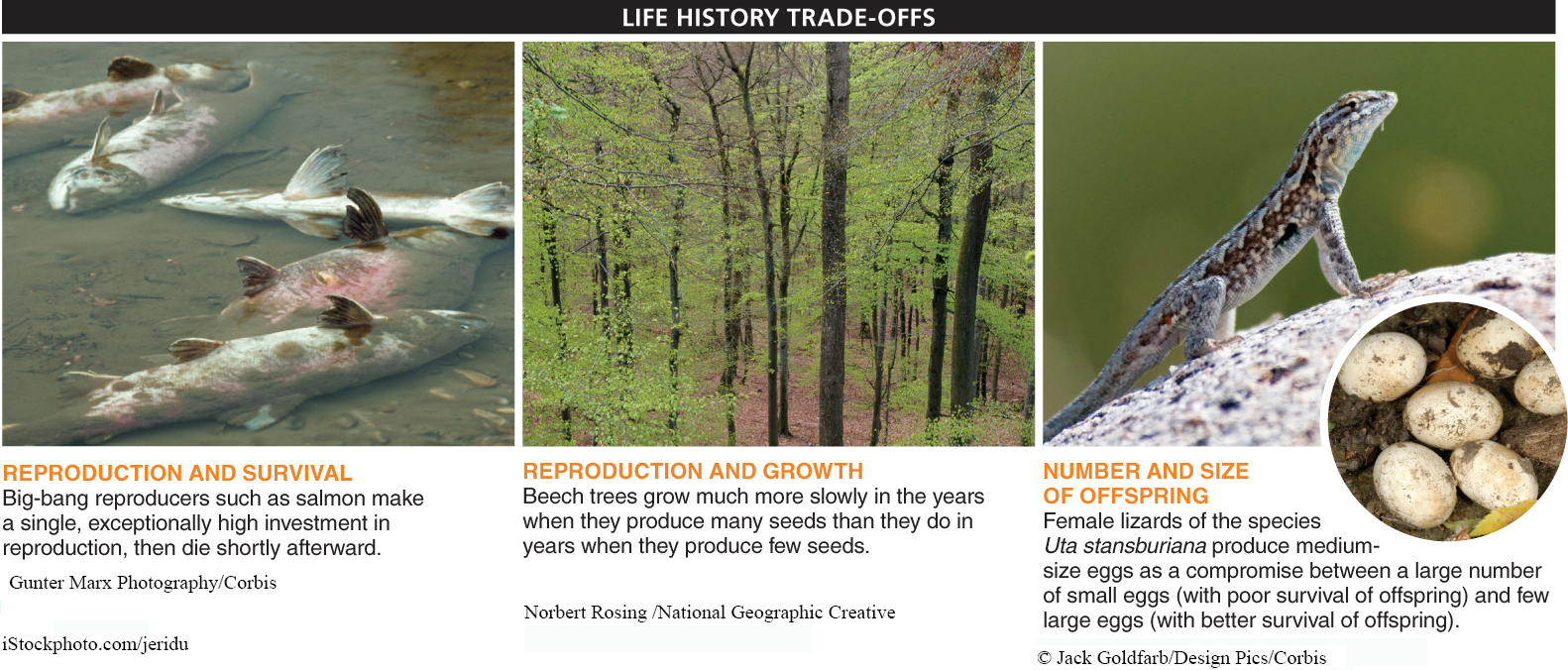If you were designing an organism, how would you structure its life history for maximum fitness? (Recall from Chapter 8 that fitness is an organism’s reproductive output relative to that of other individuals in the population.) Ideally, you would create an organism that (1) produces many offspring (beginning just after birth and continuing every year), while (2) growing tremendously large, to reduce predation, and (3) living forever.
Unfortunately, evolution operates with some constraints. Some of these traits are just not possible, because selection that changes one feature tends to adversely affect others. When evolution increases one life history characteristic, another characteristic is likely to decrease. Life history trade-
With one simple surgical procedure, most men could add more than 10 years to their life span. Why doesn’t anyone opt for it?
1. Reproduction and survival. Among big-

2. Reproduction and growth. Beech trees grow more slowly during years when they produce many seeds than in years when they produce no seeds. Similarly, female red deer kept from reproducing in their first year of life grow significantly larger during that year.
3. Number and size of offspring. The females of one lizard species, Uta stansburiana, can lay more eggs if the eggs are smaller, but a higher proportion of the offspring survive if the eggs are larger. Evolution has led to a medium-
585
There are many other trade-
Can you think of other trade-
TAKE-HOME MESSAGE 14.8
Because constraints limit evolution, life histories are characterized by trade-
Explain why the litter sizes of mammals living closer to the equator might be smaller than those in higher latitudes? How are these smaller litter sizes offset?
Areas closer to the equator do not have severe winters; therefore, the breeding seasons are long enough to allow mammals multiple reproductive episodes per year. An offsetting evolutionary factor is that these reproductive episodes tend to produce fewer offspring.